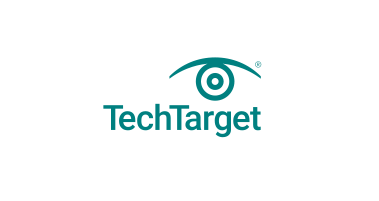
DevSecOps: Integrating Security into the Software Development Process
Introduction to DevSecOps
DevSecOps www.devsecops.org is a set of practices that aims to integrate security practices into the software development and delivery process. It is based on the idea that security should be built into the design of software, rather than added as an afterthought. By incorporating security into the development process, organizations can create more secure software faster and more efficiently.


The goal of DevSecOps
The goal of DevSecOps is to enable organizations to deliver software faster, while also maintaining the security of their systems. This is achieved by automating security testing and integrating it into the development process. Automated security testing allows developers to identify and fix vulnerabilities early in the development process, before they become a problem.

DevSecOps.org Manifesto
By embracing the concept of Security as Code, we have come to realize that there is a more efficient and effective way for security professionals like us to operate and add value without as much difficulty. It is essential that we adapt our methods quickly and foster innovation to make sure that data security and privacy concerns are not neglected due to our slow response to change.
Through the implementation of security as code, we will work to create exceptional products and services, provide insights directly to developers, and generally prioritize iteration over trying to always find the perfect solution before deployment. We will adopt a developer-like approach to make security and compliance available as services. We will open and clear new paths to help others bring their ideas to fruition.
Instead of simply relying on scanners and reports to improve code, we will approach products and services as outsiders to assist in defending what has been created. We will identify loopholes, search for vulnerabilities, and collaborate with you to provide remediation steps rather than lengthy lists of issues for you to solve independently.
We will not wait for our organizations to be impacted by mistakes or attacks. We will not be content with only discovering what is already known; rather, we will search for anomalies that have not yet been identified. We will strive to be stronger partners by valuing what you value.

Mentioned values in the Manifesto of DevSecOps.org
- Leaning in over Always Saying “No”
- Data & Security Science over Fear, Uncertainty, and Doubt
- Open Contribution & Collaboration over Security-Only Requirements
- Consumable Security Services with APIs over Mandated Security Controls & Paperwork
- Business-Driven Security Scores over Rubber Stamp Security
Red & Blue Team Exploit Testing over Relying on Scans & Theoretical Vulnerabilities - 24x7 Proactive Security Monitoring over Reacting after being Informed of an Incident
- Shared Threat Intelligence over Keeping Info to Ourselves
Compliance Operations over Clipboards & Checklists

Key practices in DevSecOps
There are several key practices that are central to DevSecOps:
- Continuous integration and continuous delivery (CI/CD): CI/CD is a set of practices that involves integrating code changes frequently and delivering software updates continuously. This allows organizations to release software updates more frequently, while also ensuring that new code is thoroughly tested before it is released.
- Automated testing: Automated testing is a key part of DevSecOps, as it allows organizations to test their software automatically, rather than relying on manual testing. This helps to ensure that software is thoroughly tested and that any vulnerabilities are identified and fixed early in the development process.
- Collaboration: DevSecOps is a collaborative approach that involves bringing together developers, security professionals, and operations teams to work together to deliver software. By working together, these teams can ensure that security is integrated into the development process and that any vulnerabilities are identified and fixed early.
- Use of open source tools: Many organizations use open source tools to automate security testing and other DevSecOps practices. These tools allow organizations to test their software automatically and identify any vulnerabilities, without having to invest in expensive proprietary solutions.

The benefits of DevSecOps
There are several benefits to adopting a DevSecOps approach to software development and delivery:
- Faster delivery of software updates: By automating security testing and integrating it into the development process, organizations can release software updates more quickly, as they can identify and fix vulnerabilities early in the development process. This allows organizations to deliver value to their customers more quickly and stay ahead of the competition.
- Improved security: By integrating security into the development process, organizations can create more secure software. Automated security testing allows organizations to identify and fix vulnerabilities early in the development process before they become a problem. This helps to prevent security breaches and protect the organization and its customers.
- Increased efficiency: DevSecOps helps to streamline the development process by automating many of the tasks that would normally be done manually. This increases the efficiency of the development process and allows organizations to deliver software faster.
- Enhanced collaboration: DevSecOps is a collaborative approach that involves bringing together developers, security professionals, and operations teams to work together to deliver software. This enhances collaboration across teams and helps to ensure that security is integrated into the development process.
- Cost savings: By automating security testing and other tasks, organizations can save time and reduce the need for manual testing. This can help to reduce costs and improve the bottom line.
The benefits of DevSecOps include faster delivery of software updates, improved security, increased efficiency, enhanced collaboration, and cost savings. By integrating security into the development process, organizations can create more secure software faster and more efficiently.

Organizations that have adopted DevSecOps approach
Many organizations have adopted a DevSecOps approach to software development and delivery in order to improve the security of their software and deliver updates faster. By integrating security into the development process and automating testing, these organizations are able to deliver more secure software more efficiently.

Some examples of organizations that have implemented DevSecOps include:
- Amazon: Amazon is a leader in the use of DevSecOps and has implemented many of the key practices, including continuous integration and continuous delivery (CI/CD), automated testing, and collaboration across teams.
- Google: Google has also embraced DevSecOps and has implemented a number of automated testing tools to ensure that their software is secure.
- Netflix: Netflix has been a pioneer in the use of DevSecOps and has implemented a number of automated testing tools to ensure that their software is secure.
- Microsoft: Microsoft has adopted a DevSecOps approach and has implemented a number of automated testing tools to ensure that their software is secure.
- Salesforce.

DevSecOps Tools
There are many different tools available to support the implementation of a DevSecOps approach, including tools for continuous integration and delivery, automated testing, security testing, and collaboration. These tools allow organizations to automate many of the tasks involved in the software development process and ensure that their software is secure. Some examples of DevSecOps tools include:

- Continuous integration and continuous delivery (CI/CD) tools: These tools automate the process of integrating code changes and delivering software updates. Examples include Jenkins, GitLab, and Azure DevOps.
- Automated testing tools: These tools allow organizations to test their software automatically, rather than relying on manual testing. Examples include Selenium, Appium, and TestComplete.
- Security testing tools: These tools help organizations to identify and fix vulnerabilities in their software. Examples include Nessus, Burp Suite, and Veracode.
- Collaboration tools: These tools enable developers, security professionals, and operations teams to work together and collaborate on software development and delivery. Examples include Slack, Trello, and Asana.
Kubernetes, Ansible, Chef, Puppet, Aqua & many more...







Conclusion: The importance of integrating security into the software development process
DevSecOps is a set of practices that aims to integrate security into the software development process, enabling organizations to deliver more secure software faster. By automating security testing and collaborating across teams, organizations can ensure that their software is thoroughly tested and that any vulnerabilities are identified and fixed early in the development process.











